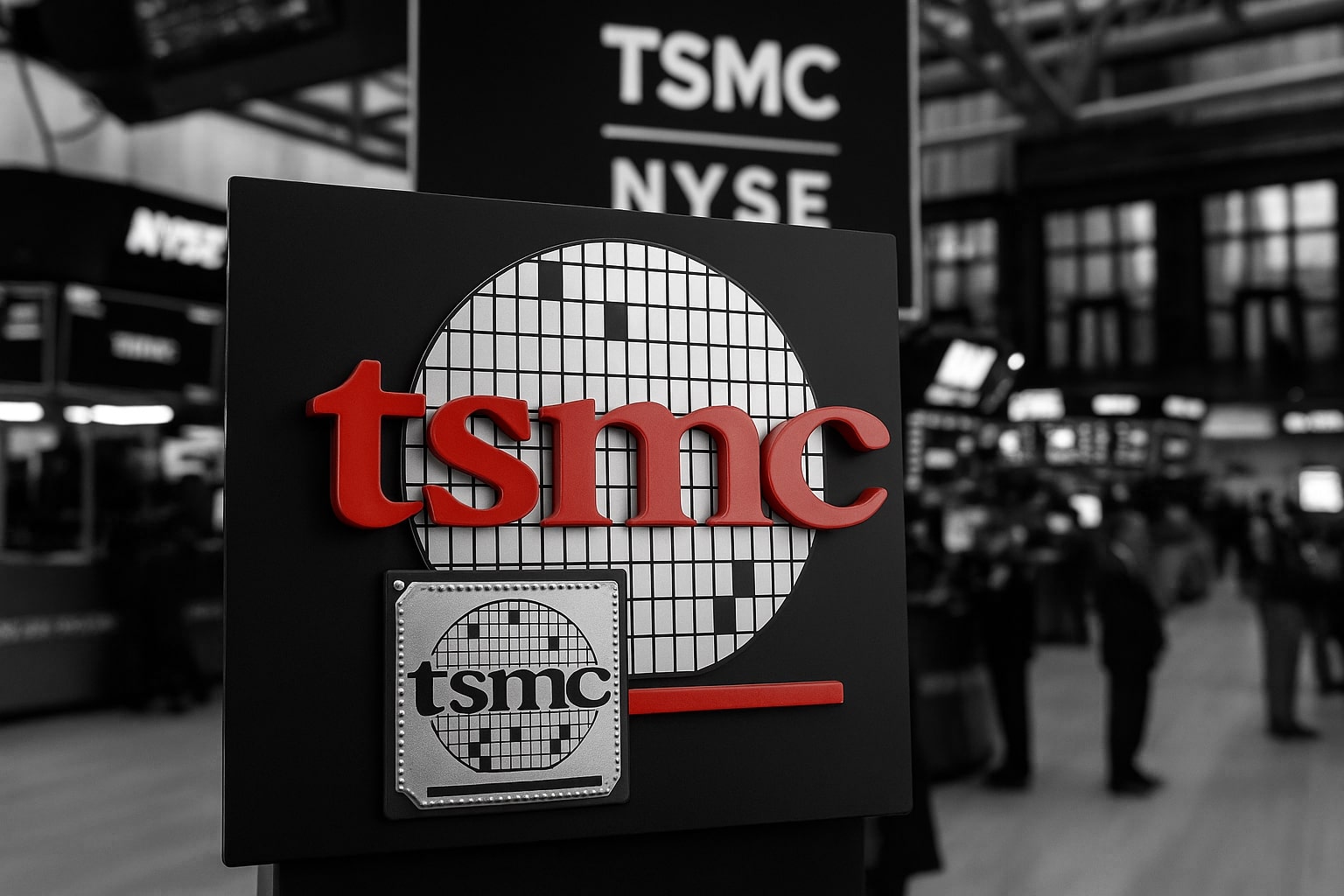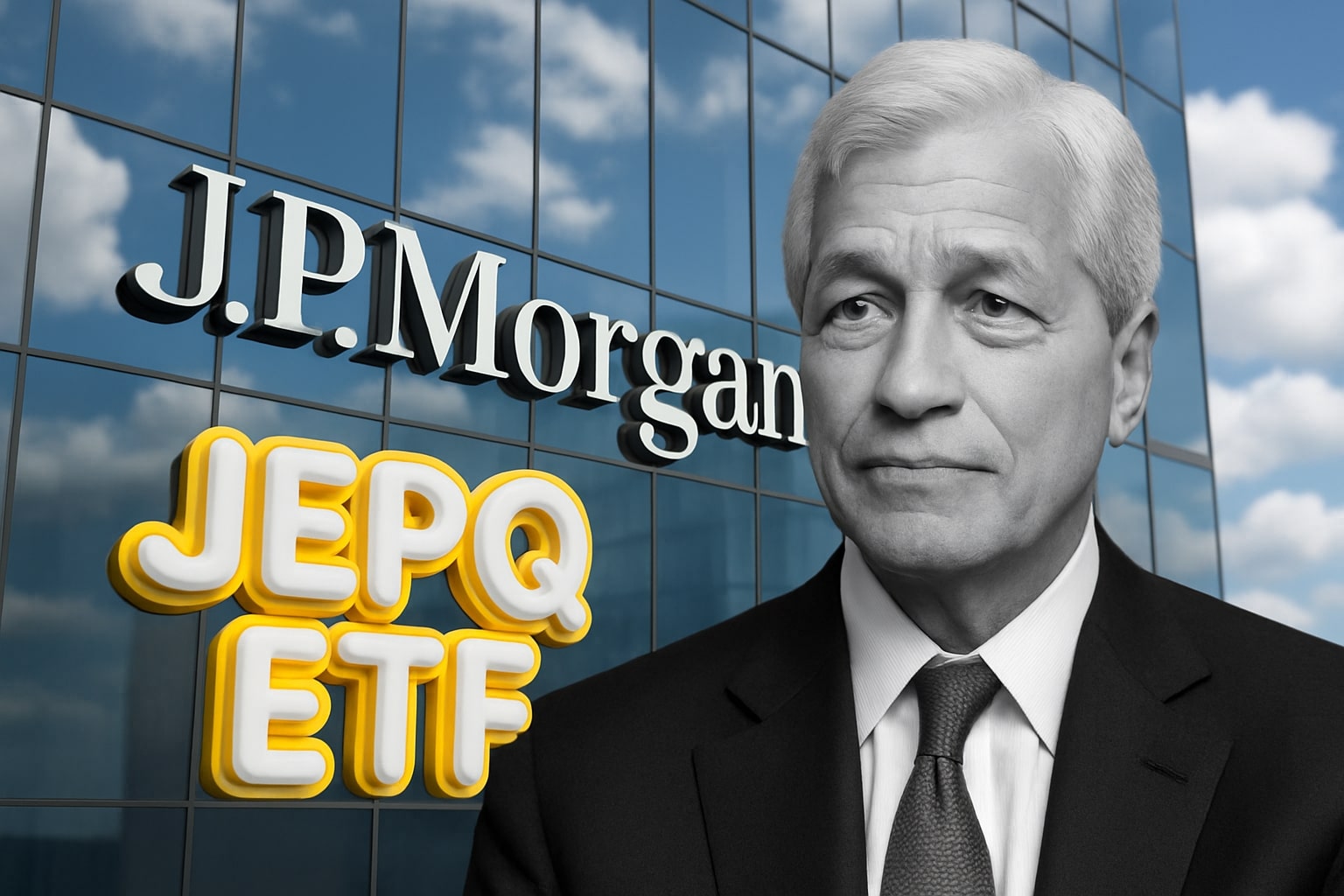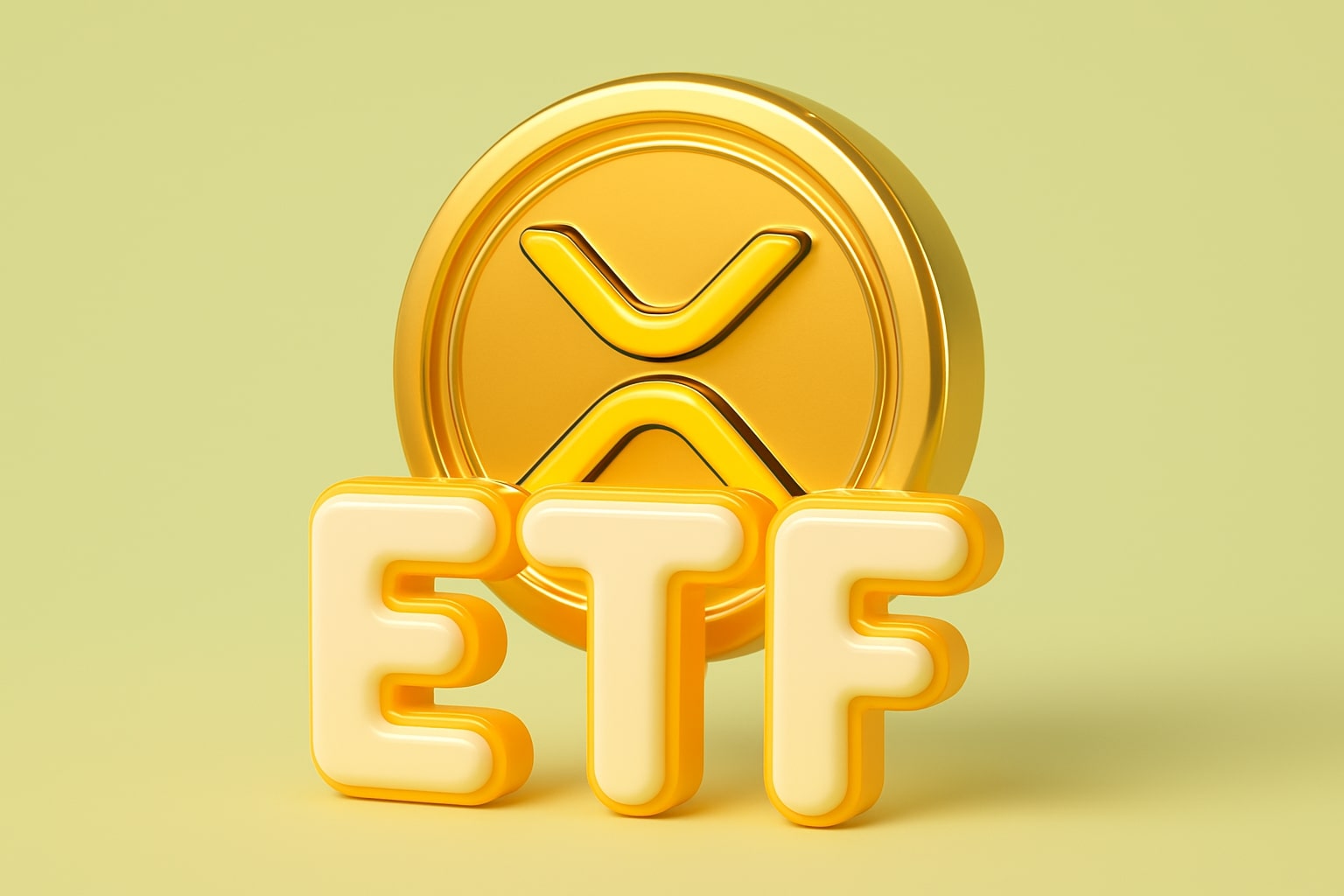
TSMC Stock Price Forecast - TSM Slides to $280 but Holds AI Supremacy with Explosive 54% Growth
Despite tariff jitters and a 6% daily selloff, TSMC maintains unmatched momentum, record cash flow, and 9 consecutive earnings beats as Wall Street eyes $365 per share on relentless AI demand | That's TradingNEWS
TSMC (NYSE:TSM) Powers Through Volatility as AI Demand Ignites Record Growth
Taiwan Semiconductor Manufacturing Company (NYSE:TSM) stands at the center of the global technology supply chain, and its dominance has never been more evident than in 2025. Despite a recent 6% single-day decline that pushed the stock to $280.66, driven by renewed tariff threats from the U.S., the company’s long-term trajectory remains firmly upward. TSMC’s current market capitalization surpasses $1.15 trillion, an extraordinary valuation justified by its unmatched operational scale, record profitability, and central role in the artificial intelligence revolution that’s transforming data infrastructure worldwide. The stock, even after its brief pullback, is still up nearly 48% year-to-date, consistently outperforming both peers and the S&P 500. With gross margins at 59% and net income margins at 42%, TSMC continues to lead the semiconductor sector in both efficiency and growth potential. Investors are watching closely as the company positions for another strong quarter and a potential rally back toward $365, its current 12-month price target, reflecting an upside of roughly 25% from present levels. You can follow the stock’s movement live at TSMC Real-Time Chart.
Explosive Quarterly Performance: Double-Beat Momentum Extends to Nine Straight Quarters
TSMC delivered another powerful quarter that underscored its dominance. For the second quarter of fiscal 2025, the company reported $31.73 billion in revenue, a 54% year-over-year increase, beating Wall Street expectations by $438 million. Earnings per share climbed to $2.47, marking an astounding 71% annual jump from $1.48 a year earlier. The performance confirmed the company’s unique operating leverage as it continues to capture the lion’s share of the AI manufacturing cycle. High-performance computing accounted for 60% of total sales, reflecting the surging demand from data-center operators and chip designers like NVIDIA, AMD, and Apple. The smartphone segment represented 27%, with automotive and IoT providing steady, incremental growth. TSMC’s manufacturing technology remains unmatched, with its 3-nanometer and upcoming 2-nanometer nodes maintaining a multi-year lead over competitors. These results not only validated the company’s premium valuation but also reinforced its reputation for consistent execution.
The AI Data-Center Boom: A $3 Trillion Tailwind Transforming TSMC’s Backlog
Behind the strong earnings lies a seismic shift in global technology spending. Industry analysts, including Wedbush, estimate more than $3 trillion in AI and cloud-infrastructure investment between now and 2028. Every one of the hyperscale giants—Microsoft, Alphabet, and Amazon—has increased data-center spending at a historic pace, directly benefiting TSMC. The company’s third-quarter guidance calls for $32.4 billion in revenue, translating into 38% year-over-year growth, with a projected gross margin of 56.5% and operating margin of 46.5%. These figures signal another potential earnings beat when the company reports results on October 16.
TSMC’s partnerships with chip leaders deepen its visibility well into 2026. AMD’s recent 6 GW GPU contract with OpenAI, combined with NVIDIA’s previously announced $100 billion AI infrastructure deal, effectively locks in multi-billion-dollar production commitments for TSMC’s advanced N3P process. The company’s backlog continues to swell, while its global market share in foundry services expanded from 31% in Q2 2024 to 38% in Q2 2025, according to Counterpoint Research. This expansion underscores TSMC’s ability to scale profitably while competitors struggle to match its process yields and delivery reliability.
Navigating Tariff Noise: Trump’s 100% Threat and Market Volatility
The October correction that sent TSMC’s share price down from $300 to $280 was fueled by political rhetoric rather than structural weakness. Trump’s declaration of a potential 100% tariff on Chinese imports effective November 1 rattled markets, triggering a broad semiconductor sell-off. Yet, history suggests these threats often fade before implementation—just as similar measures announced in April were quietly withdrawn weeks later. For TSMC, which sells primarily to U.S. and global clients outside mainland China, the fundamental impact remains limited.
China’s tightening control on rare-earth exports may add minor short-term friction in the supply chain, but AI spending continues at full throttle. Semiconductor Industry Association data show global chip revenue jumped 21.7% year-over-year to $64.9 billion in August 2025, with sequential growth of 4.4% month-over-month, proving that industry momentum is accelerating, not slowing. Investors who sold into tariff fear may find they exited too soon, as TSMC’s fundamentals remain unshaken and the company’s global manufacturing diversification—particularly new U.S. and Japanese fabs—acts as a hedge against regional instability.
Read More
-
JEPQ ETF Holds $58.82 as Fund Flows Cool and Nasdaq Valuations Stretch
06.12.2025 · TradingNEWS ArchiveStocks
-
XRP ETFs Cross $1 Billion AUM as XRPI and XRPR Lead Institutional Wave
06.12.2025 · TradingNEWS ArchiveCrypto
-
Natural Gas Price Breakout: NG=F Soars to $5.50 on Cold U.S. Weather & LNG Export Boom
06.12.2025 · TradingNEWS ArchiveCommodities
-
USD/JPY Price Forecast - Dollar to yen Slides to 155.60, BOJ Hike Reprice Global Currency Markets
06.12.2025 · TradingNEWS ArchiveForex
Financial Strength: $90 Billion Cash Pile and Positive Net Interest Income
Few corporations in the world exhibit the balance-sheet power that TSMC does. The company holds over $90 billion in cash and equivalents, against $34.6 billion in total debt obligations, giving it a net cash position exceeding $55 billion. This fortress-level liquidity allows TSMC to maintain flexibility regardless of interest-rate environments. Even in today’s high-rate context, the firm recorded a $735 million positive net interest income last quarter—an extraordinary figure for a manufacturer. Cash from operations reached $73 billion (TTM), dwarfing the sector median of barely $120 million, further demonstrating how efficiently the company converts revenue into free cash flow.
With return on common equity at 34.5%, roughly six times the industry average, and EBITDA margins of 69%, TSMC continues to deliver shareholder returns rarely seen in the semiconductor space. Investors can review executive trades and institutional positions through TSMC Insider Transactions.
Valuation Perspective: Premium Multiples Backed by Dominant Margins
At a forward P/E of 30.7×, TSMC trades at a 19% premium to the sector median of 25.8×—a valuation the market willingly pays for consistent execution and technological leadership. The company’s PEG ratio of 1.42 remains below the peer average of 1.83, suggesting its growth justifies, and arguably underprices, its multiple. The EV/EBITDA of 13.7× and EV/EBIT of 19.6× indicate modest discounts relative to the broader semiconductor group, while Price-to-Sales of 9.9× exceeds the industry’s 3.6× average—evidence that investors anticipate continued double-digit revenue expansion.
While some may call this a rich valuation, the earnings trajectory supports it. Wall Street expects FY2026 EPS of $11.49, up 16% from FY2025’s $9.85. Applying a 32× multiple yields a fair-value estimate near $365 per share, in line with high-end analyst targets and implying 25% upside from current levels. The market appears to recognize that premium margins, steady top-line growth above 40% YoY, and a growing global monopoly on advanced nodes justify continued multiple expansion.
Competitive Landscape: Intel’s (NASDAQ:INTC) Catch-Up Race Looks Distant
Recent headlines around NVIDIA’s $5 billion investment in Intel (NYSE:INTC) sparked speculation about a new challenger emerging in the foundry race, but the gap remains vast. Intel’s 18A process is expected to reach production in early 2026, while TSMC is already mass-producing 3-nanometer wafers and preparing its 2-nanometer line for 2026 commercial rollout. TSM’s gross margin near 56% dwarfs Intel’s projected 36%, and while TSM’s revenue grew 39% YoY, Intel’s growth remains flat amid workforce reductions and restructuring. Even with NVIDIA’s partial collaboration, Intel remains years away from competing with TSMC’s precision yields, production capacity, and trusted client relationships.
In the current AI-centric environment, TSMC’s integrated packaging and CoWoS (Chip-on-Wafer-on-Substrate) technology remain irreplaceable for the GPUs powering OpenAI, Amazon, and other hyperscale data-center operators. That moat continues to expand, not shrink.
Risks: Geopolitics, Supply Chain, and Market Rotation
The principal overhang remains geopolitical risk. Any escalation between Taiwan and China could shake investor confidence and potentially disrupt production temporarily. However, TSMC’s strategy to diversify manufacturing—with U.S. facilities in Arizona and upcoming plants in Japan—significantly reduces regional concentration over the next two years. Another moderate risk is industry cyclicality; chip demand historically alternates between shortages and oversupply. Yet the AI cycle’s structural nature may smooth that volatility in coming years.
The market’s biggest near-term risk remains macro-driven: if global equities see a broad risk-off move or trade war rhetoric intensifies, TSM could experience further volatility. But these events would likely present accumulation opportunities rather than structural breaks in growth.
Outlook: AI Supercycle Secures a Long Runway
All data points converge toward sustained earnings expansion. Global demand for AI hardware is projected to grow at 26% CAGR through 2029, and TSMC stands at the center of this capital flow. Every major tech platform depends on its most advanced nodes for GPUs, CPUs, and AI accelerators. Even at current valuations, TSMC’s profitability metrics—EBIT margin 48.8%, net income margin 42.5%—justify long-term bullishness.
Analysts’ consensus price target of $301 may appear conservative compared to bullish projections of $365. Given the company’s balance-sheet strength, consistent earnings surprises, and rapidly expanding order book, the likelihood of another upside earnings revision is high.
Verdict: Strong Buy on NASDAQ:TSM Amid AI Expansion and Market Volatility
Considering the company’s record financial performance, global market share leadership, and balance-sheet resilience, Taiwan Semiconductor Manufacturing Company (NASDAQ:TSM) remains one of the strongest strategic investments in the technology sector. The recent pullback to $280 offers a favorable entry for long-term investors anticipating renewed upside into 2026. Barring an extreme geopolitical escalation, TSMC’s fundamentals continue to justify its premium valuation and position it to reach new highs.
My stance: Strong Buy, with a 12-month target of $365, supported by robust AI-driven growth, consistent execution, and the company’s unmatched role as the world’s semiconductor backbone.


















